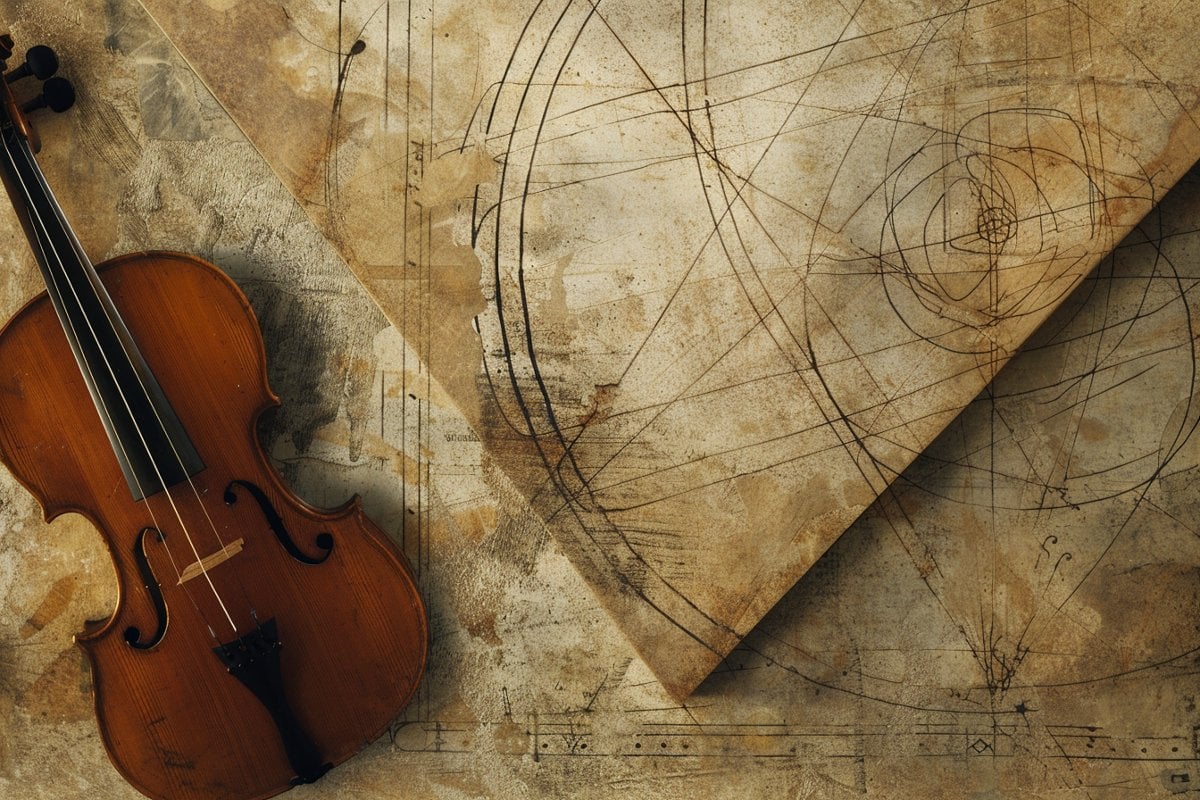Summary: New research challenges Pythagoras’s ancient theory on musical consonance, revealing our preference for slight imperfections in chords rather than the perfect integer ratios traditionally associated with beautiful music.
The study highlights how the mathematical relationships deemed crucial for a chord’s beauty disappear with instruments unfamiliar to Western traditions, such as the Javanese gamelan’s bonang.
Over 4,000 participants from the US and South Korea, through online experiments, demonstrated a significant preference for these “inharmonic” sounds, indicating a broader and instinctive appreciation for varied musical harmonies beyond Western norms.
This opens up exciting opportunities for exploring new harmonic languages that resonate with listeners without prior musical training, encouraging musicians and producers to experiment with diverse instruments for innovative musical expressions.
Key Facts:
- Imperfection Preferred: Listeners actually favor chords with slight deviations from perfect mathematical ratios, finding beauty in minor imperfections.
- Cultural Diversity in Harmony: Traditional Western focus on specific musical instruments limits the exploration of harmony, while instruments like the bonang introduce new consonance and dissonance patterns.
- Universal Appreciation for New Harmonies: Even without musical training, people instinctively enjoy the unique consonances of non-Western instruments, challenging the notion of a universal harmonic language based on mathematical ratios.
Source: University of Cambridge
According to the Ancient Greek philosopher Pythagoras, ‘consonance’ – a pleasant-sounding combination of notes – is produced by special relationships between simple numbers such as 3 and 4.
More recently, scholars have tried to find psychological explanations, but these ‘integer ratios’ are still credited with making a chord sound beautiful, and deviation from them is thought to make music ‘dissonant’, unpleasant sounding.
But researchers from Cambridge University, Princeton and the Max Planck Institute for Empirical Aesthetics, have now discovered two key ways in which Pythagoras was wrong.
Their study, published in Nature Communications, shows that in normal listening contexts, we do not actually prefer chords to be perfectly in these mathematical ratios.
“We prefer slight amounts of deviation. We like a little imperfection because this gives life to the sounds, and that is attractive to us,” said co-author, Dr Peter Harrison, from Cambridge University’s Faculty of Music and Director of its Centre for Music and Science.
The researchers also found that the role played by these mathematical relationships disappears when you consider certain musical instruments that are less familiar to Western musicians, audiences and scholars.
These instruments tend to be bells, gongs, types of xylophones and other kinds of pitched percussion instruments. In particular, they studied the ‘bonang’, an instrument from the Javanese gamelan built from a collection of small gongs.
“When we use instruments like the bonang, Pythagoras’s special numbers go out the window and we encounter entirely new patterns of consonance and dissonance,” Dr Harrison said.
“The shape of some percussion instruments means that when you hit them, and they resonate, their frequency components don’t respect those traditional mathematical relationships. That’s when we find interesting things happening.”
“Western research has focused so much on familiar orchestral instruments, but other musical cultures use instruments that, because of their shape and physics, are what we would call ‘inharmonic’.
The researchers created an online laboratory in which over 4,000 people from the US and South Korea participated in 23 behavioural experiments. Participants were played chords and invited to give each a numeric pleasantness rating or to use a slider to adjust particular notes in a chord to make it sound more pleasant. The experiments produced over 235,000 human judgments.
The experiments explored musical chords from different perspectives. Some zoomed in on particular musical intervals and asked participants to judge whether they preferred them perfectly tuned, slightly sharp or slightly flat.
The researchers were surprised to find a significant preference for slight imperfection, or ‘inharmonicity’. Other experiments explored harmony perception with Western and non-Western musical instruments, including the bonang.
Instinctive appreciation of new kinds of harmony
The researchers found that the bonang’s consonances mapped neatly onto the particular musical scale used in the Indonesian culture from which it comes. These consonances cannot be replicated on a Western piano, for instance, because they would fall between the cracks of the scale traditionally used.
“Our findings challenge the traditional idea that harmony can only be one way, that chords have to reflect these mathematical relationships. We show that there are many more kinds of harmony out there, and that there are good reasons why other cultures developed them,” Dr Harrison said.
Importantly, the study suggests that its participants – not trained musicians and unfamiliar with Javanese music – were able to appreciate the new consonances of the bonang’s tones instinctively.
“Music creation is all about exploring the creative possibilities of a given set of qualities, for example, finding out what kinds of melodies can you play on a flute, or what kinds of sounds can you make with your mouth,” Harrison said.
“Our findings suggest that if you use different instruments, you can unlock a whole new harmonic language that people intuitively appreciate, they don’t need to study it to appreciate it. A lot of experimental music in the last 100 years of Western classical music has been quite hard for listeners because it involves highly abstract structures that are hard to enjoy. In contrast, psychological findings like ours can help stimulate new music that listeners intuitively enjoy.”
Exciting opportunities for musicians and producers
Dr Harrison hopes that the research will encourage musicians to try out unfamiliar instruments and see if they offer new harmonies and open up new creative possibilities.
“Quite a lot of pop music now tries to marry Western harmony with local melodies from the Middle East, India, and other parts of the world. That can be more or less successful, but one problem is that notes can sound dissonant if you play them with Western instruments.
“Musicians and producers might be able to make that marriage work better if they took account of our findings and considered changing the ‘timbre’, the tone quality, by using specially chosen real or synthesised instruments. Then they really might get the best of both worlds: harmony and local scale systems.”
Harrison and his collaborators are exploring different kinds of instruments and follow-up studies to test a broader range of cultures. In particular, they would like to gain insights from musicians who use ‘inharmonic’ instruments to understand whether they have internalised different concepts of harmony to the Western participants in this study.
About this music, math, and auditory neuroscience research news
Author: Thomas Almeroth-Williams
Source: University of Cambridge
Contact: Thomas Almeroth-Williams – University of Cambridge
Image: The image is credited to Neuroscience News
Original Research: Open access.
“Timbral effects on consonance disentangle psychoacoustic mechanisms and suggest perceptual origins for musical scales” by Peter Harrison et al. Nature Communications
Abstract
Timbral effects on consonance disentangle psychoacoustic mechanisms and suggest perceptual origins for musical scales
The phenomenon of musical consonance is an essential feature in diverse musical styles. The traditional belief, supported by centuries of Western music theory and psychological studies, is that consonance derives from simple (harmonic) frequency ratios between tones and is insensitive to timbre.
Here we show through five large-scale behavioral studies, comprising 235,440 human judgments from US and South Korean populations, that harmonic consonance preferences can be reshaped by timbral manipulations, even as far as to induce preferences for inharmonic intervals.
We show how such effects may suggest perceptual origins for diverse scale systems ranging from the gamelan’s slendro scale to the tuning of Western mean-tone and equal-tempered scales.
Through computational modeling we show that these timbral manipulations dissociate competing psychoacoustic mechanisms underlying consonance, and we derive an updated computational model combining liking of harmonicity, disliking of fast beats (roughness), and liking of slow beats.
Altogether, this work showcases how large-scale behavioral experiments can inform classical questions in auditory perception.

Dr. Sarah Adams is a scientist and science communicator who makes complex topics accessible to all. Her articles explore breakthroughs in various scientific disciplines, from space exploration to cutting-edge research.







